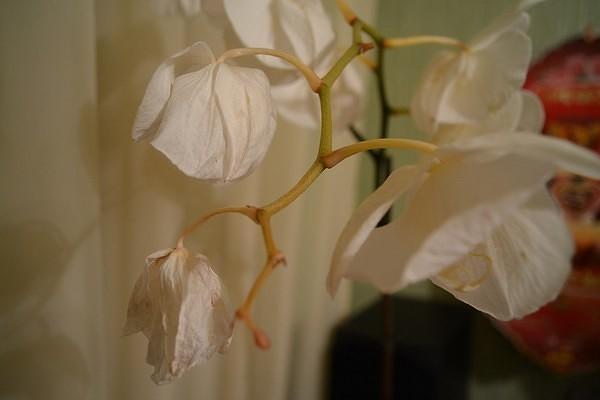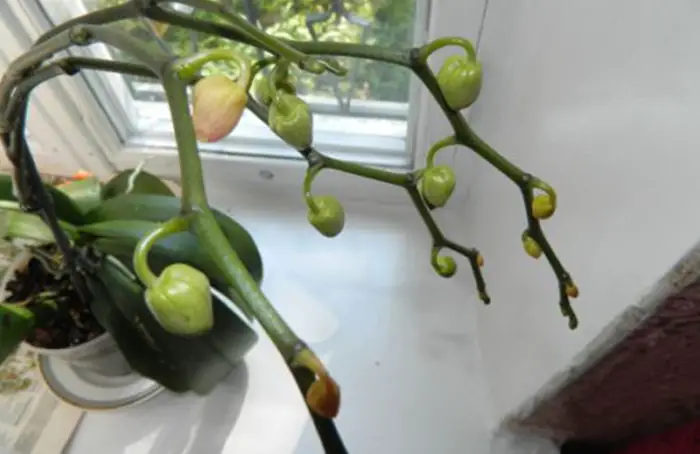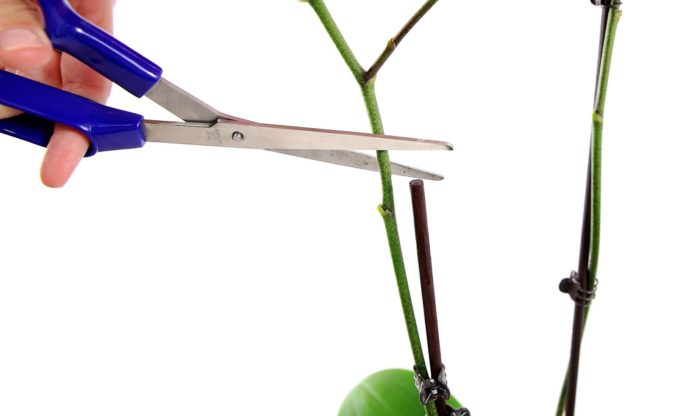Lush and long flowering is the main advantage of the orchid and the reason for growing this plant at home. To admire the bright buds of exotic beauties, flower growers are ready to create real tropics in their apartments. But orchids are quite capricious, so even the slightest violations of the rules for caring for them can provoke the dropping of buds.

if you orchid is facing a different problem and you want a solution then check out the section Orchid problems.
why are the flowers falling off my orchid?
The frequency and duration of orchid flowering depend on the soil, watering, fertilizing, but to a greater extent on the temperature and humidity in the room. The discrepancy of even one point leads to the dropping of flowers by the capricious plant.
An orchid that has recently appeared in the house drops its buds in almost 100% of cases. At the end of the adaptation period, if the plant is properly cared for, the condition will return to normal and flowering will resume.
Causes of natural wilting of flower
The slow and gradual wilting of the buds is a natural physiological process. In this case, there is no reason for excitement: the plant will accumulate strength and after a while will bloom again.
Shorter flowering times and faster bud wilt may be related to the age of the plant. If it is over 7 years old, it will not bloom for more than 2 months. The chance to get an old copy, which will fade very quickly, exists when you buy it hand-held. In this case, creating ideal conditions and following the rules of care will not help.
Advice! You can slightly extend the flowering period by placing the orchid for a while in a cold room and reducing watering at the same time. This technique will slow down the natural wilting of the buds.
See also Where To Put Orchids In Your Home?
orchid drops flowering buds
When a plant suddenly begins to shed its buds, it is necessary to analyze the conditions of its maintenance and try to find out the exact reason. Only in this case, there is a chance to help the orchid, and in some cases even prevent its death.

Incorrect temperature conditions
The orchid is extremely sensitive to the temperature of the content and can respond by dropping flowers to the following non-compliance with the requirements:
- Hypothermia. The death of a flower occurs at temperatures below +5 degrees. In winter, it is enough to hold the orchid on a cold windowsill, and it will begin to shed its buds.
- Overheat. Keeping on the windowsills during the heating operation or under the rays of the scorching sun leads to a sharp drying out of the soil and injury to the roots.
- Sharp jumps in temperature. During flowering, a decrease in temperature by more than 4 degrees serves as a signal that the warm season is over and it is time to retire. The plant begins to free itself from flowers, even if they are in the stage of full disclosure.
- Drafts. Careless airing of the room in cool weather leads to hypothermia of the orchid.
Insufficient lighting
An observant grower may notice that the set of buds begins with an increase in daylight hours. As it grows in size, the plant needs more and more light. If there is not enough sunlight, the buds will begin to fall off.
So that the plant does not experience stress from a lack of light, it is important to adhere to the following recommendations:
- Grow a flower on eastern windowsills. In this case, he will get the first, most precious morning rays.
- Some types of flower can grow on northern windows, but in this case additional lighting will be needed.
- On the south window, the plant can get sunburn, so it will have to be shaded from 11 to 15 hours. The exceptions are the varieties Vandam and Dendrobium: the southern windowsill will not hurt them.
- In cloudy weather in winter, daylight hours are increased to 10-12 hours using phyto- or fluorescent lamps.
Check out Why Are My Orchid Buds Falling Off indoor?
Advice! On warm days, it is advisable to expose the orchid to the street or an open balcony, protecting it from the wind and direct sunlight.
Air humidity
In the natural environment, wild flowering occurs during the rainy season. The flower feels most comfortable at a humidity of 60% and above. In a drought, the plant begins a dormant period. Consequently, a decrease in moisture level is perceived as the onset of a dry season, and it ends flowering.
To prevent this from happening, it is necessary to control the humidity in the room, especially on hot days and during heating. The critical indicator is 50%. Dry air will not only cause the buds to drop but also affect the overall health of the plant.
You can increase the humidity in one of the following ways:
- install an automatic humidifier or an artificial fountain in the room;
- place open containers with water next to the plant;
- put the pot on a pallet with expanded clay filled with water;
- spray roots and leaves in the morning.
Carefully! When placing the orchid on a pallet with expanded clay, the bottom of the pot should not touch the water. From constant moisture, the roots will begin to rot.
Improper care of flowering orchid
Timely watering and feeding is an important condition for proper care. The alternation of overdrying and waterlogging is destructive. The soil in the pot should be slightly damp at all times, but not wet. An indicator of the optimal water content in the soil is condensation on the walls of the pot. If bubbles are visible, watering is not required yet, as soon as they disappear, it is necessary to add a new portion of water.
An important condition for the correct development and flowering of an orchid is a sufficient amount of micro and macro elements. In the planting substrate, they end quickly, so additional feeding is needed. With a lack of nutrition, the plant does not have enough strength to form buds and bloom. The frequency of dressing is once every 2 weeks.
Diseases and pests
A common cause of orchid flowers to drop is a disease or pest infestation. The plant reacts sharply to root diseases:
- Gray rot. Gray spots appear on the lower part of the plant, gradually the plaque spreads to the entire aerial part. The cause of rot is waterlogging of the soil combined with low temperatures. Nitrogen overfeeding can also cause illness.
- Root rot. The first sign of the disease is the browning of the leaves. Orchid roots soften and stop absorbing water and nutrients.
For the treatment of orchids, drugs Fundazol, Topsin are used. Processing is carried out 2-3 times with an interval of 20 days.
A common reason for dropping buds is mealybug infestation. When this pest appears in the axils of the leaves, a white bloom appears, similar to pieces of cotton wool. Then the foliage begins to turn yellow, the flowers fall off. The worm is cleaned off with a cotton swab dipped in an alcohol solution, then the orchid is sprayed with an insecticide.
Want to know about can I put two orchids in one pot?
Can stem be saved if flowers have fallen?
Attempts to save the lost buds and the arrow starting to dry out are pointless. Yellowing in the lower part of the peduncle indicates that biological processes stop in the tissues and there will be no recovery. Dry peduncles are a source of reproduction of diseases and pests, so they are cut off and the wound is treated with charcoal.

If you handle the orchid carelessly, you can accidentally break off the flower arrow. If part of the shoot is damaged, the rest will continue to bloom. The plant is already programmed to form buds and does not need to stimulate flowering.
After completely breaking out the arrow from the base, the orchid can give a new shoot with buds. In this case, flowering will simply be delayed for several months. Compliance with the rules of care will help to tune the plant for a new formation of buds. It is advisable to increase the length of daylight hours for this time.
Additional stimulating activities will help accelerate the onset of flowering:
- ensuring a difference between day and night temperatures of 5 degrees;
- spraying the plant with a solution of succinic acid;
- processing of the waiting kidney with cytokinin paste after its preliminary release from the upper layer.
If the peduncle has broken completely and there is no waiting bud from below, the arrow is removed without waiting for it to dry out naturally. The cut is covered with garden pitch to prevent infection from entering the trunk.
For your information! A broken arrow is not able to grow together, therefore, tying it, as inexperienced growers do, is useless. It is better to cut off the stem at the fracture site and put the part with the buds in a vase of water.
Preventive measures for orchid flowers falling off
Careful adherence to the rules of care helps to extend the flowering period and prevent the plant from dropping buds:
- timely irrigation with settled water + 30 … + 35 degrees;
- feeding with phosphorus-potassium fertilizers from the beginning of bud formation to the end of flowering;
- maintaining an optimal level of humidity in the room;
- compliance with the temperature regime.
Careful care and gentle handling of the plant will provide it with a comfortable environment. The orchid, if all the recommendations are followed, will delight the owner with a lush, long flowering from 2 to 6 months.
